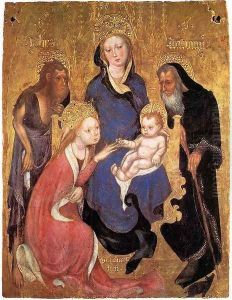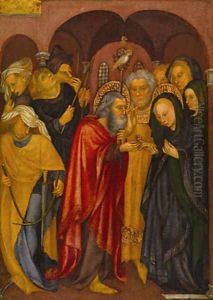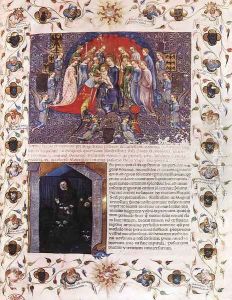Michelino da Besozzo Paintings
Michelino da Besozzo, also known as Michelino de Mulinari, was an Italian painter and manuscript illuminator, active during the Gothic period, and is considered one of the most significant artists of the early 15th century in Northern Italy. Born around 1370, possibly in the town of Besozzo, near Varese in Lombardy, Michelino showed an exceptional talent in the arts from a young age. His work is characterized by its delicate attention to detail, vibrant colors, and the incorporation of naturalistic elements, which stood out against the more stylized and hierarchical art typical of the time.
Michelino's career spanned several decades, during which he worked for various patrons, including members of the Visconti family, who were the rulers of Milan and among the most powerful patrons of the arts in Italy during the early Renaissance. His contributions to the Visconti Hours, one of the most famous illuminated manuscripts of the 15th century, highlight his mastery in the art of illumination and his ability to infuse scenes with emotional depth and a sense of naturalism that was unparalleled at the time.
Apart from manuscript illumination, Michelino da Besozzo was also acclaimed for his frescoes and panel paintings, though sadly, many of these works have not survived or are in a deteriorated state, making it challenging to fully assess his impact and skill in these mediums. Notable works attributed to him include a series of frescoes in the Basilica of San Eustorgio in Milan and the Madonna del Castagno, showcasing his versatility and the broad range of his artistic abilities.
Despite the scarcity of surviving works, Michelino da Besozzo's influence on the development of Italian Renaissance art cannot be understated. His innovative approach to naturalism and the detailed observation of the natural world marked a significant departure from the more abstract and formulaic representations of earlier periods. This shift not only influenced his contemporaries but also laid the groundwork for the developments in art that would come to define the Renaissance.
Michelino da Besozzo's death around 1455 marked the end of an era, but his legacy lived on through his contributions to the art of manuscript illumination and his role in the transition towards more naturalistic forms of representation in Italian art. Despite the limited number of extant works definitively attributed to him, Michelino remains a figure of great interest and study in the history of art, representing the bridge between Gothic art and the burgeoning Renaissance style.


